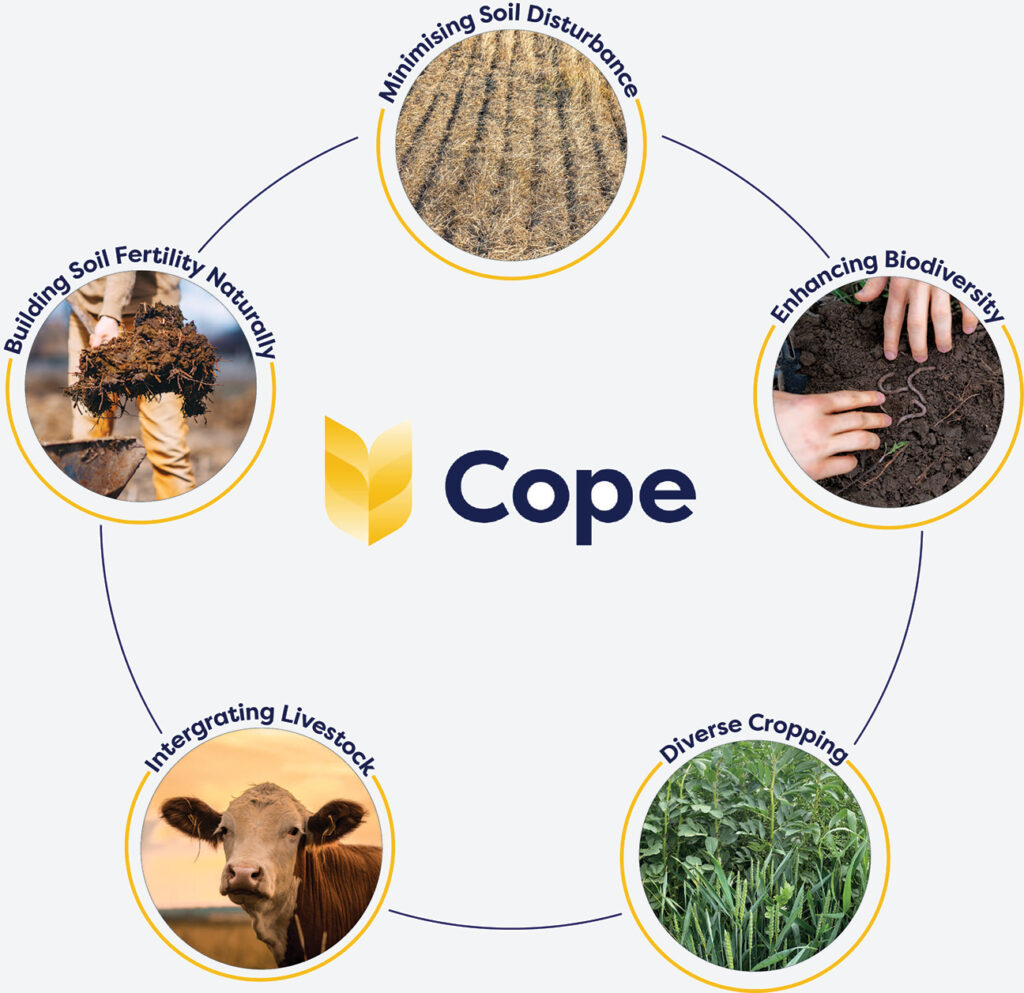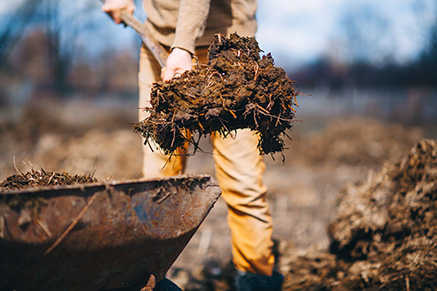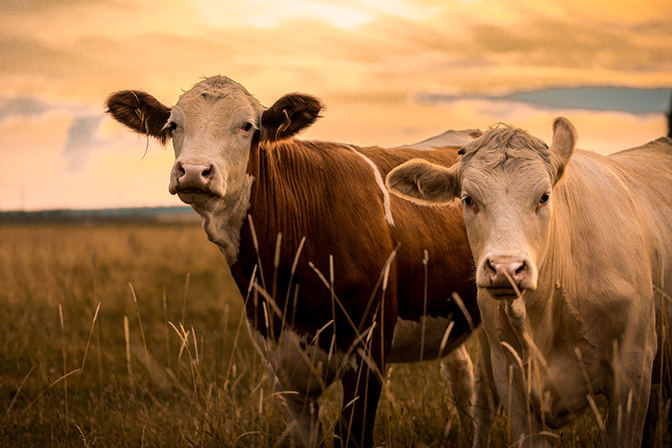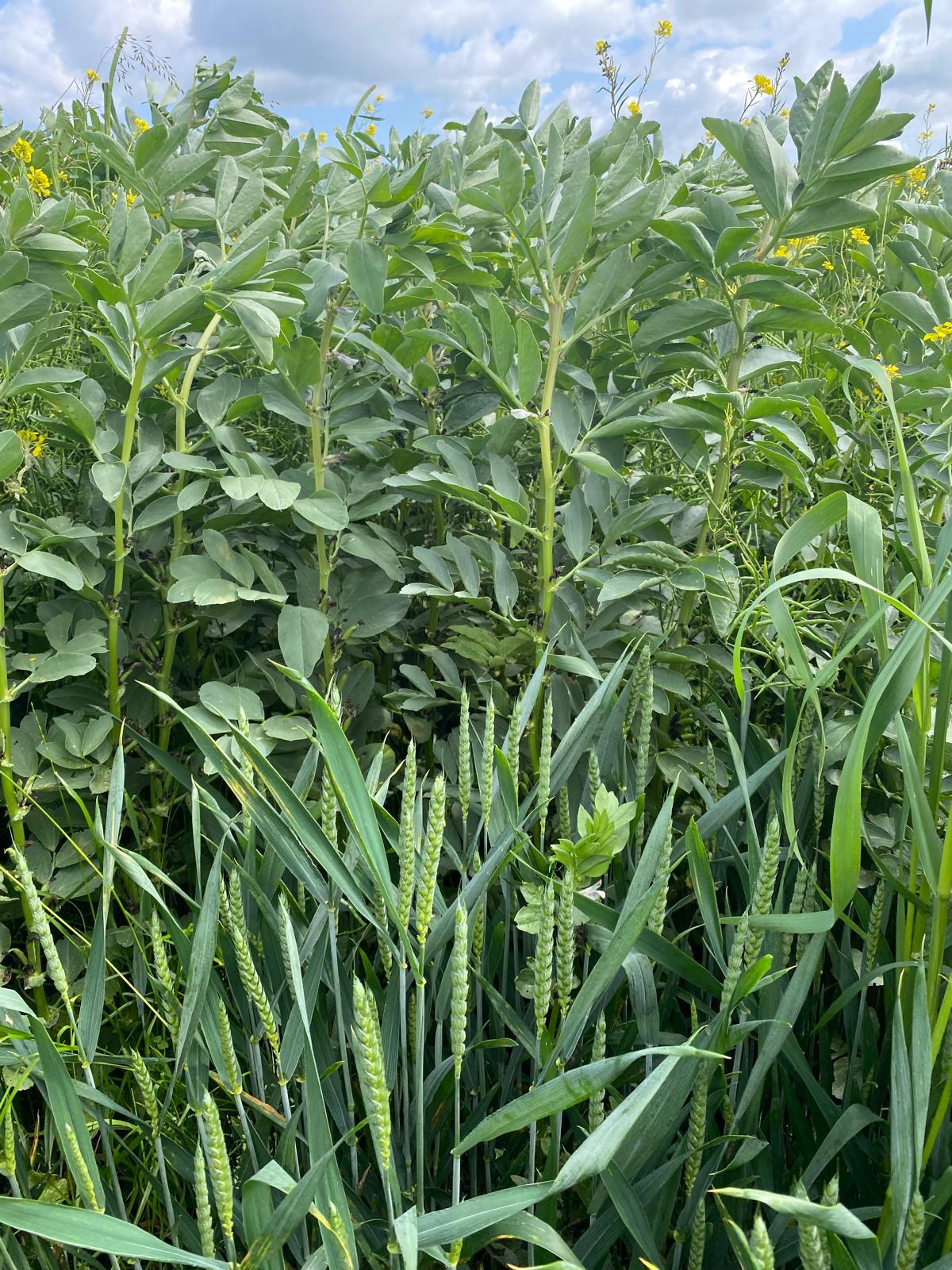Regenerative Farming
Regenerative Agriculture is the system of using farming principles and practices that increase and enhance soil biodiversity, enrich the soil, improve water retention and enhance the ecosystem.
Healthy soil is at its heart and the point of it is to capture atmospheric carbon dioxide into the soil and the biomass above the soil surface, inverting the current state of play.
The way in which this system works is to reverse the practices that are employed by the world’s agricultural production methods. We’ve put together a handy guide, outlining the five key principles of regenerative farming.
The whole point of regenerative agriculture is to capture atmospheric carbon dioxide into the soil and the biomass above the soil surface, inverting the current state of play. The way in which this system works is to reverse the practices that are currently employed by the world’s industrial agricultural production methods.
As the perpetrators of this world dilemma we must re-think and re-assess how we produce food for the ever-increasing world population and protect our natural resources, number one being our soil. If we look back to production systems prior to 1940, before the development of chemical fertilisers, pesticides and fungicides, our parents worked with nature, feeding the soil flora and fauna, which in turn fed the plants which we cropped as a grain or through livestock.
We can farm in a more environmentally-friendly way by ensuring our soils are not left uncovered by plant life. The range of seeds and mixtures that Cope Seeds has to offer fulfil every situation, not only enhancing soil biodiversity, enriching it and increasing available nutrients, but also decreasing the carbon dioxide in the atmosphere.
Five core principles of regenerative agriculture


Minimising soil disturbance
Tillage loosens and removes any plant matter covering the soil, leaving it bare. Bare soil, especially soil that is deficient in rich organic matter, is more likely to be eroded by wind and water.
Tilling releases carbon into the atmosphere and displaces and/or kills off the millions of microbes and insects that form healthy soil biology. The long-term use of deep tillage can convert healthy soil into a lifeless growing medium dependent on chemical inputs for productivity. No-till/minimum tillage, in conjunction with other regenerative practices, enhances soil aggregation, water infiltration and retention, and carbon sequestration.

Building soil fertility naturally
Soil fertility is increased in regenerative systems biologically through application of cover crops, crop rotations, compost, and animal manures, which restore the plant/soil microbiome.
Artificial and synthetic fertilisers have created imbalances in the structure and function of microbial communities in soils, bypassing the natural biological acquisition of nutrients for the plants, creating a dependent agroecosystem and weaker, less resilient plants. Also, artificial fertilisers are manufactured from fossil fuels, in an energy intensive way, as well being a major contributor to increased nitrous oxide emissions in agriculture.

Enhancing biodiversity
Soils contain enormous numbers of diverse living organisms assembled in complex and varied communities. Soil biodiversity reflects the variability among living organisms in the soil – ranging from the myriad of invisible microbes, bacteria and fungi to the more familiar macro-fauna such as earthworms and termites.
Plant roots can also be considered as soil organisms in view of their symbiotic relationships and interactions with other soil components. These diverse organisms interact with one another and with the various plants and animals in the ecosystem, forming a complex web of biological activity. Building biological ecosystem diversity begins with inoculation of soils with composts or compost extracts to restore soil microbial community population, structure and functionality restoring soil system energy through full-time planting of multiple crop intercrop plantings, multispecies cover crops, and borders planted for bee habitat and other beneficial insects.

Integrating livestock
Well-managed grazing practices stimulate improved plant growth, increased soil carbon deposits, and overall pasture and grazing land productivity while greatly increasing soil fertility, insect and plant biodiversity, and soil carbon sequestration.
Regenerative grazing is a principle-driven agricultural practice of building soil health by managing livestock on perennial and annual forages, rather than just turning out your animals and letting them graze where they like when they like. Regenerative grazing is managing where and for how long your animals graze to increase the cover of your grasses, the organic matter in your soil and the amount of photosynthesis per plant. The idea is to mimic nature whose grasslands evolved in a symbiotic relationship. It is not a strict formula or recipe and it relies on observation and adaptive management

Diverse cropping
Keeping the soil covered with diverse crops is key to regenerating them. Generally, the more plant diversity there is in a field, where the soil is kept covered with as many multiple crop and intercrop plantings, multi-species cover crops, and borders planted for bee habitat and other beneficial insects, the healthier the soil will be. Adding livestock to this rotation in a managed way, can have soil benefits through the use of organic matter and natural fetiliser. Diverse crop rotations will add to the diversity of soil microorganisms and create soils that assure crop resilience and optimum yield over time. This practice of incorporating plant diversity diversity, which is key to soil health and regenerative agricultural practices.